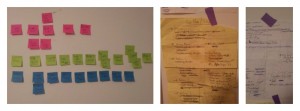In the last post I talked about trends in project management and mentioned the most up and coming trend being project management software. I wanted to expand on this topic and show how project management software is not only a trend in project management, but also an important tool in saving money within the project itself as well as a way to save your company money. In a sense, project management software puts business owners in the driver’s seat of the company’s profitability. It also helps businesses organize, promotes collaboration and provide the business with the ability to track and plan everything related to any project they may have actively running. Project management software allows the company to track the success of multiple projects occurring simultaneously, individually and collectively. For these many reasons and more project management software can be a great and successful tool in saving a company money.
In the business world time is money and getting employees up to speed on projects ultimately can cost a company a lot of money. If a new employee takes over an existing project or joins a project team, the time it takes to train him is money spent that can otherwise be avoided with project management software. PM software can save a company money by providing a quick and simple way for employee to gather the information they need on a project and have a time-line provided for them of what has already occurred with the project and what still needs to be done.
PM software also saves companies money by creating an Icloud based filing system. Rather than a company wasting time and money searching for notes, files and documentation, everything exists within Icloud storage system for the PM software making it easily accessible for all that may want to look anything up at any time. This type of filling system makes it much more more comprehensive than a standard filling system and allows for less error and more money savings in the physical filling.
PM software can also serve as a training tool for the business as it is self-contained. This process can save a company a lot of money as well that would otherwise be spent on trainers or on salaries of existing employees to train new employees or staff. The software has the ability to teach employees on how the company manages projects and the tasks that go into completing each and every project.
The final value savings can be found in correcting PM mistakes and making sure they are not costly ones. Mistakes can cause a company to not only loose profits but also customers which in turn causes a future loss of income to the business. Mistakes also require a company to spend time correcting the mistake that could have been spent working on new tasks or finalizing the project. PM software can help prevent all of these issues and ultimately saving the company money.
As pointed out in these many cases, project management software is not only crucial in managing a project easier and with less confusion, but it is also a key component in cost savings which is on every companies agenda now a days.
http://quickbase.intuit.com/blog/2012/12/26/three-ways-online-project-management-can-save-time/
http://www.jobnimbus.com/blog/2012/09/21/leveraging-project-management-software-to-earn-more/
http://smallbusiness.chron.com/can-project-management-software-save-business-money-1074.html
http://www.tasktrakz.com/blog/whentimetouseprojectmanagementsoftware




